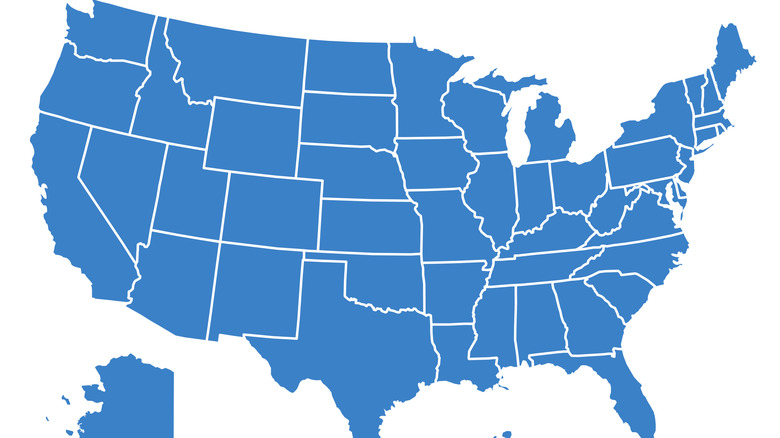How The James Beard Award Regions Are Broken Up
In 2019, the James Beard Foundation announced a significant overhaul of its regional award system. Previously, the country was divided into ten regions for the "Best Chef" category, but as culinary scenes flourished in more corners of the U.S., the foundation faced criticism for outdated and uneven boundaries. Some regions were massive and packed with competition — like the Southeast and Midwest — while others covered smaller areas with fewer contenders. The imbalance sparked debates about representation, fairness, and accessibility within the awards process. Some even argued that James Beard himself would've hated the award that bore his name.
The new map, introduced in 2020, expanded the number of regions to twelve. The idea was to better reflect the evolving food landscape and give chefs in underrepresented areas a fairer shot at recognition. Cities that had long been culinary powerhouses, like Chicago and New Orleans, were placed in more appropriately sized regions. Meanwhile, states that previously had little visibility — like the Dakotas or parts of Appalachia — were grouped in ways that offered better context for comparison. Aside from being cosmetic, the changes were designed to make the James Beard Awards more equitable and aligned with modern dining culture. According to the Foundation, this regional realignment was based on extensive feedback from industry professionals, journalists, and past nominees.
A breakdown of the current James Beard Award regions
As of the realignment, the James Beard Awards are divided into twelve regions. In the west is California; the Northwest and Pacific (Alaska, Hawaii, Oregon, and Washington); the Southwest (Arizona, Nevada, New Mexico, and Oklahoma); and Mountain (Colorado, Idaho, Montana, Utah, and Wyoming). In the center of the country, are the Great Lakes (which includes Illinois, Indiana, Michigan, and Ohio); the Midwest (Iowa, Kansas, Minnesota, Missouri, Nebraska, North Dakota, South Dakota, and Wisconsin); and Texas (now its own region).
The eastern regions include the Northeast (Connecticut, Massachusetts, Maine, New Hampshire, Rhode Island, and Vermont); the Southeast (Georgia, Kentucky, North Carolina, South Carolina, Tennessee, and West Virginia); the South (Alabama, Arkansas, Florida, Louisiana, Mississippi, and Puerto Rico); the Mid-Atlantic (Delaware, Maryland, New Jersey, Pennsylvania, Virginia, and Washington, D.C.), and New York state.
Texas becoming its own category was one of the most notable changes, as it was a move meant to acknowledge the state's booming food culture and diverse culinary identities, from barbecue to Vietnamese to Tex-Mex. The "Northwest and Pacific" region was also a surprise, combining states as distant as Alaska and Hawaii under one umbrella. Though some critics questioned the logic of these new groupings, the Foundation explained that they aimed for geographic balance while still respecting culinary ecosystems. The hope was that more focused regions would help lesser-known chefs break through the noise and earn deserved attention.
What the realignment means for chefs and restaurants
For chefs and restaurants, the updated James Beard regions can be a game changer. Before the realignment, talented cooks in overlooked states often competed against chefs from major cities with more media coverage, like Atlanta or Chicago. Now, a chef in Nebraska or Utah might stand a better chance of becoming a finalist, not because of lowered standards, but because they're no longer overshadowed by more famous neighbors. It's also opened doors for regional cuisines to shine on their own terms, rather than be measured against entirely different culinary scenes.
The change has broader implications, too. By acknowledging that excellence can come from anywhere (not just the coasts or established food cities), the James Beard Foundation signaled a deeper commitment to inclusion and visibility. It's an invitation for food lovers and journalists to explore lesser-known culinary destinations. For emerging chefs, it's a reminder that their work matters, even if they're not based in New York or L.A. In short, the regional overhaul hasn't just shifted how awards are handed out, it's reshaping how the entire country thinks about culinary prestige.


